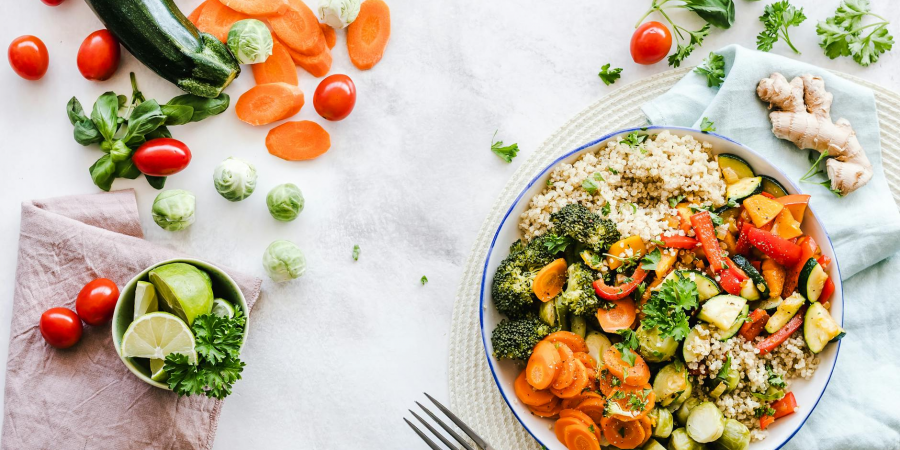

Food tastes and sensations are referred to as "flavours of food" and they vary widely. Taste, scent, and texture come together to form flavor, which is an essential component of the whole eating experience. Here's a summary of the essential elements along with some illustrations:
1. Simple Preferences
There are five widely accepted fundamental tastes that go into creating flavor:
Sweet: Frequently connected to certain proteins and carbohydrates. Fruits, sweetened beverages, and sweets are a few examples.
Sour: Found in acidic foods such as vinegar, citrus fruits, and fermented goods.
Salty: Associated with high-sodium foods like cheeses, cured meats, and salted snacks.
Bitter: Generally present in foods like coffee, dark chocolate, kale, Brussels sprouts, and some herbs and spices.
Umami: Also referred to as the savory taste, it is found in meals high in glutamates, including meats, aged cheese, mushrooms, and soy sauce.
2. Fragrance
The impression of flavor is greatly influenced by aroma. By detecting volatile molecules generated from food, the olfactory system improves the flavor experience. Scents of freshly made bread, grilled meat, and herbs and spices are a few examples.
3. Texture
Texture can improve or detract from the eating experience by influencing how flavor is perceived. Important textures consist of:
Crispy/Crunchy: Fried dishes, fresh veggies, and chips.
Creamy: Ice cream, yogurt, and custard-type dairy items.
Chewy: Some meats, candies like gummies.
Tender: Ripe fruits, well-cooked meats.
4. A temperature
The perception of flavors can change with temperature. For example, heat can accentuate some flavors and scents, while cold can mask sweetness.
5. Blending Tastes
Certain meals develop complex flavor profiles by combining several fundamental flavors and scents:
Asian cuisine frequently uses sweet and sour ingredients, like in sweet and sour pork.
Sweet and Salty: Found in foods like chocolate-covered pretzels and salted caramel.
Found in dishes like chili chocolate and some barbecue sauces, spicy and sweet
6. Cultural and Regional Affects
The tastes and combinations of flavors vary greatly among cultures:
Asian cuisine is known for its use of spicy, sour, and umami flavors. Common ingredients include ginger, chile, and soy sauce.
Mediterranean cuisine emphasizes the harmony of flavors—sweet, sour, and umami—as well as fresh herbs and olive oil.
Latin American food is recognized for its use of citrus, spices, and a harmony of flavors—sweet and savory.
7. The Effect of Cooking Techniques
Foods can have their flavors enhanced or altered by different cooking techniques:
Grilling: Contributes a charred, smokey flavor.
Roasting or baking can bring out the sweetness and caramelize sugars.
Frying: Frequently amplifies umami and savory flavors.
Samples of Flavor Combinations
Chili and chocolate combine sweet, bitter, and fiery flavors.
Strawberries with Balsamic Vinegar: A slightly umami, sweet, and sour combination.
Lamb with Mint: Brings savory meat to life with fresh, herb overtones.
Around world:
Japanese cuisine in Asia
Rich in umami ingredients: Seaweed, dashi soup, miso, and soy sauce.
Fresh fish paired with sushi and sashimi has delicate, clear flavors.
Pickled veggies and natto (fermented soybeans) are examples of fermented foods.
Chinese Food
Many regional flavors, include Cantonese (mild and somewhat sweet), Hunan (hot and sour), and Sichuan (spicy and numbing with Sichuan peppercorns).
Soy sauce, oyster sauce, and hoisin sauce are common sauces.
Dim sum: Small, bite-sized dishes with a variety of flavors and contents.
Indian Food
Herbs and spices: curry leaves, garam masala, coriander, cumin, and turmeric.
Curries with layers and richness: paneer tikka masala and butter chicken.
Regional differences: Northern Indian (creamy, nutty), Southern Indian (coconut, tamarind).
Italian cuisine in Europe
Simple and fresh ingredients: garlic, tomatoes, basil, and olive oil.
Classic foods include pizza, risotto, and pasta (carbonara, Bolognese).
Cheeses and salted meats: prosciutto, mozzarella, and Parmesan.
French Food
Pastries, escargot, and croissants all have rich, buttery flavors.
Seasonings and herbs: tarragon, rosemary, and thyme.
Rich sauces: hollandaise, beurre blanc, and bordelaise.
Spanish Food
Paella with chorizo, shellfish, and saffron is a bold and colorful dish.
Tapas: Tiny dishes with a variety of flavors (such as jamón ibérico and patatas bravas).
Other cold soups, such as gazpacho, are zesty and refreshing.
Middle Eastern and Lebanese Food
Spices and herbs: sumac, parsley, and mint.
Mezze: A selection of tiny appetizers (tabbouleh, baba ganoush, and hummus).
Kebabs with grilled meats: Frequently marinated in spices, lemon juice, and garlic.
Persian Food
Sweet and fragrant: rose water, saffron, and pomegranate.
Rice dishes: jeweled rice, basmati rice with tahdig (crispy bottom).
Stews: ghormeh sabzi (a stew of beef and herbs), and fesenjan (a pomegranate and walnut).
Morocco Moroccan cuisine
Intricate spice mixtures such as ras el hanout, cumin, and cinnamon.
Tagines: Meat, vegetable, and dried fruit stews cooked slowly.
Serve couscous with meats and heavy sauces.
Ethiopian Food
Spongy flatbread called injera is a stew basis.
Lentil stews (misir wat) with Berbere spice blend are spicy and acidic.
meals made with teff: A traditional grain used in a variety of recipes.
Mexican Food
Lime, cilantro, and chili peppers are bright and powerful.
Street cuisine: elotes, tamales, and tacos.
Mole: Chocolate, spices, and chiles combined to make rich sauces.
Brazilian Cooking
Tasty and varied: churrasco (barbecue) and feijoada (black bean stew with meat).
Fruits from the tropics: papaya, açaí, mango.
staples: farofa (toasted cassava flour), rice, and beans.
